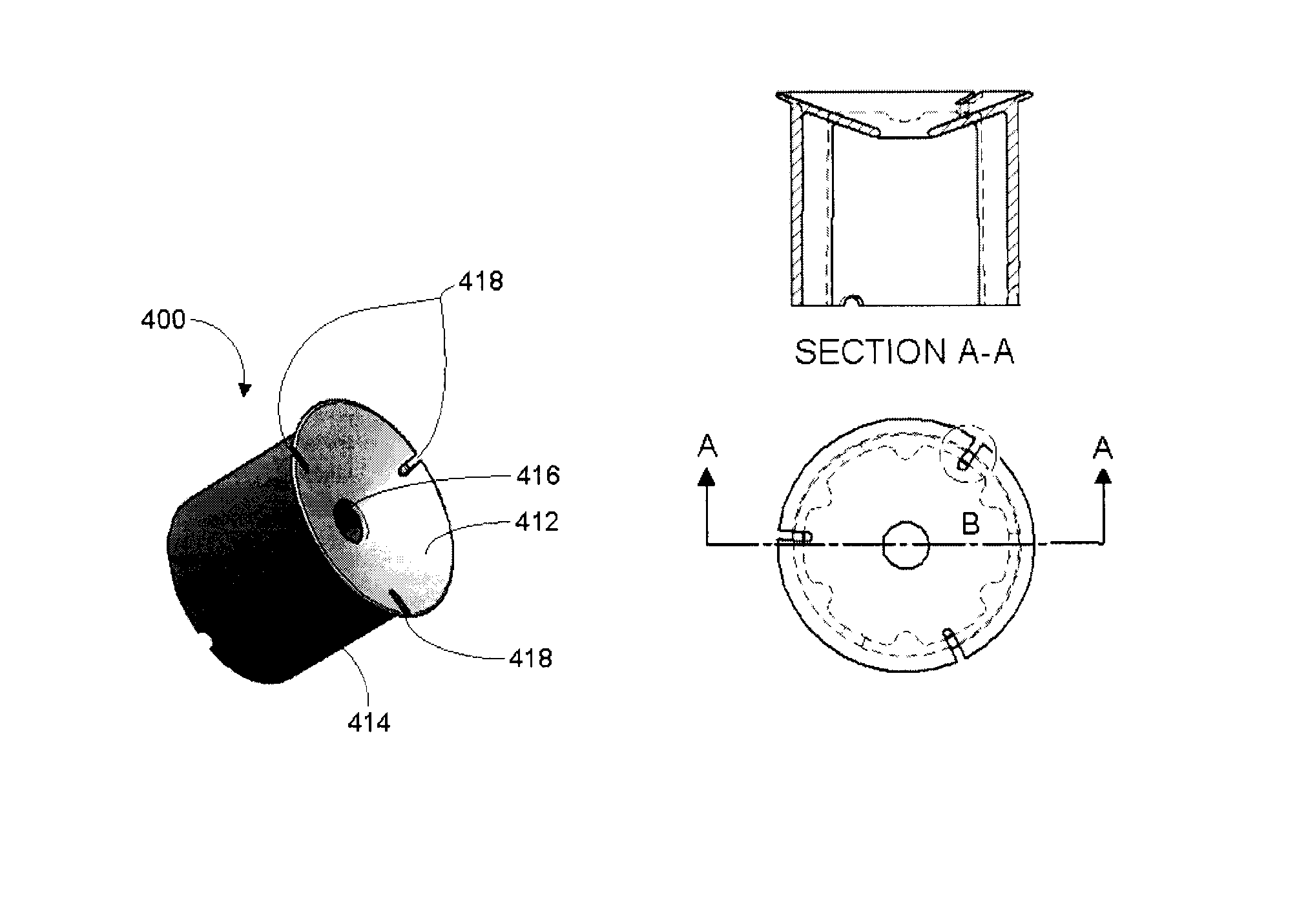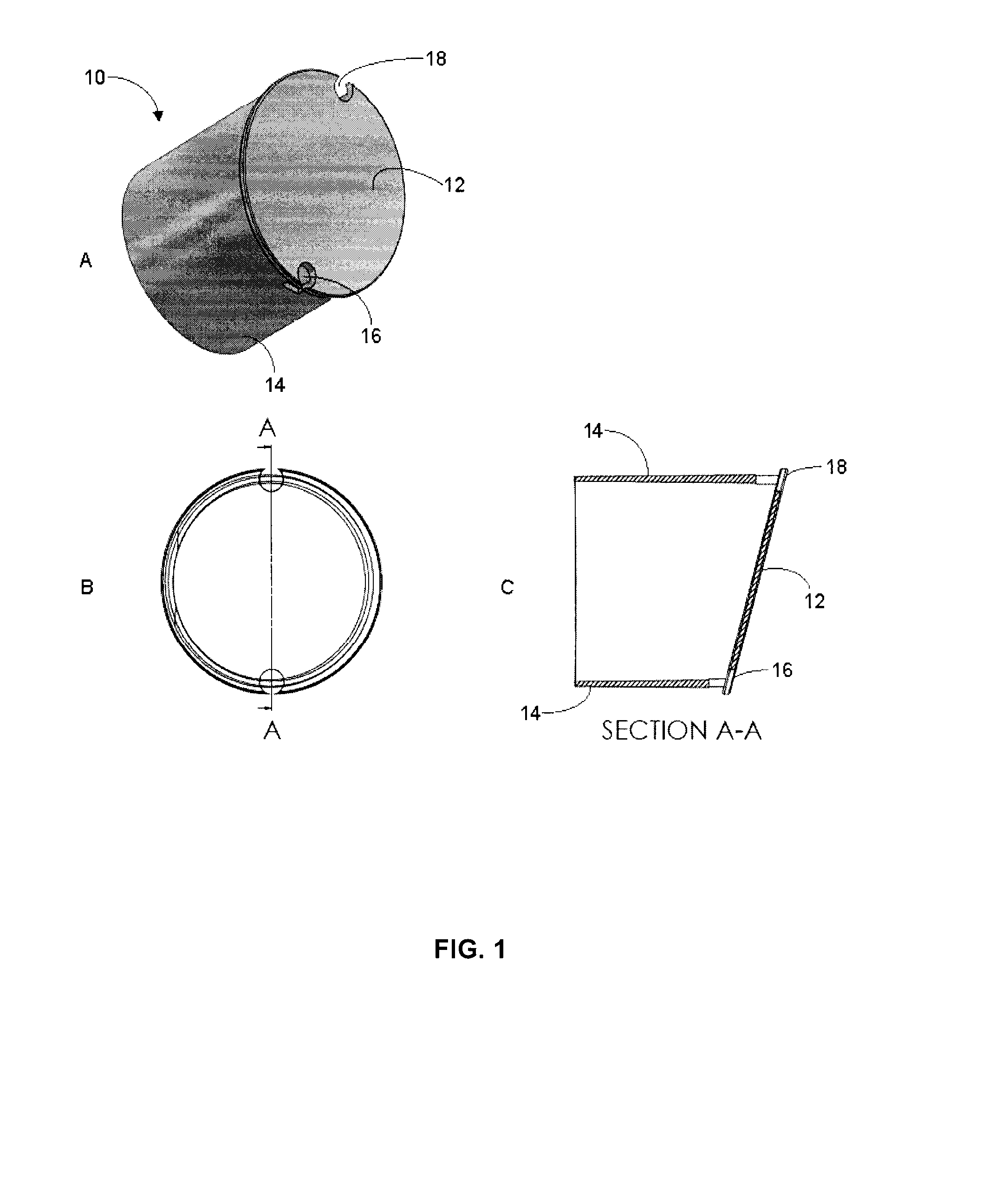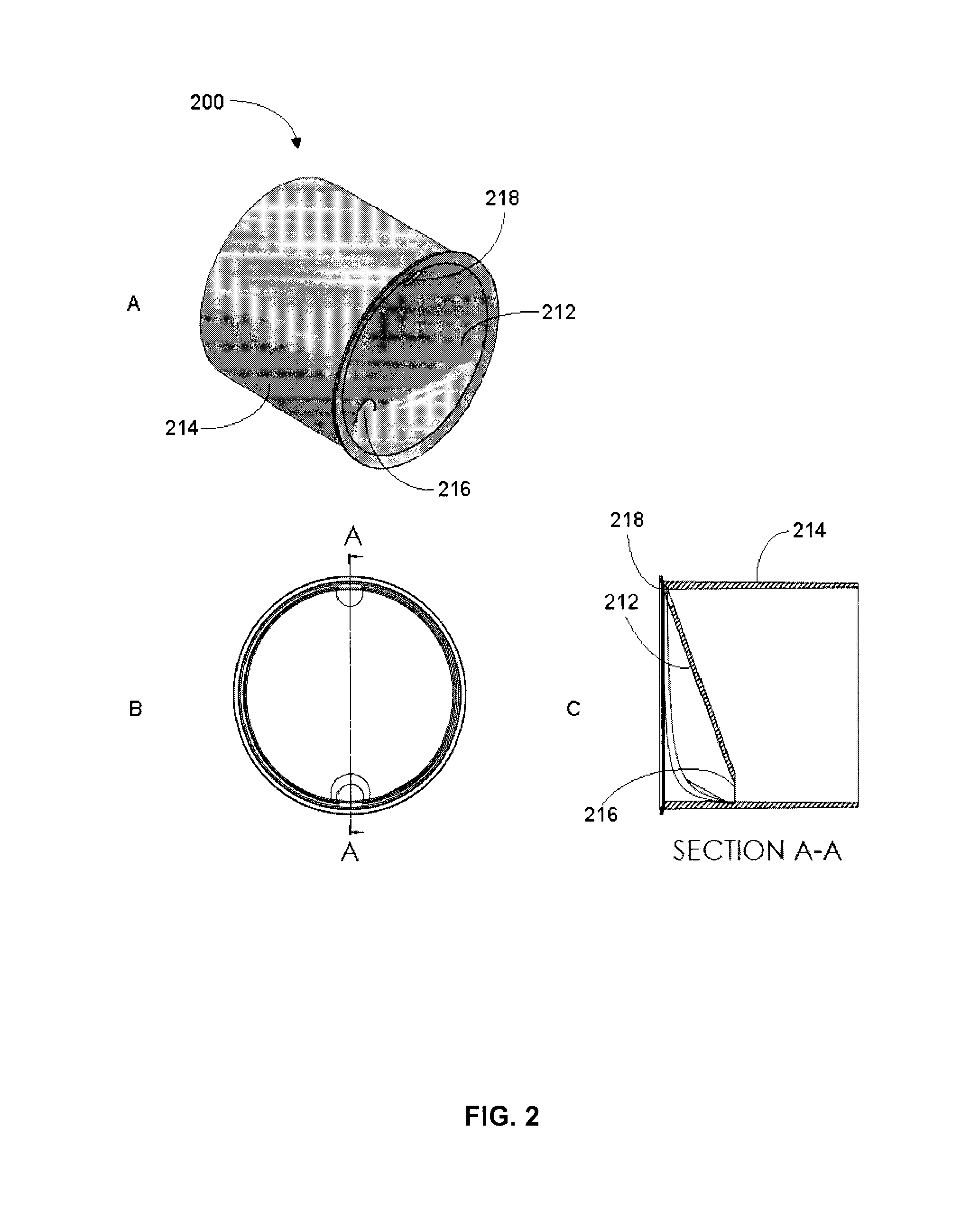Method and insert for density gradient separation
a density gradient and insert technology, applied in the field of inserts for centrifugation tubes, can solve the problems of difficult recovery of mononuclear cells, limited detection of metastatic cells, and difficult loading of tubes with inserts, and achieve the effect of rapid prototyping
- Summary
- Abstract
- Description
- Claims
- Application Information
AI Technical Summary
Benefits of technology
Problems solved by technology
Method used
Image
Examples
example 1
Density Gradient Separation
[0072]Density gradient separation is a well-known procedure wherein cells are separated into one or more fractions based on differences in the density of the cells. An exemplary protocol for a single discontinuous density gradient separation of cells is outlined below:[0073]1. Fill a centrifuge tube about ⅓ full with density gradient solution (e.g. Ficoll-Paque, Histopaque).[0074]2. Gently layer cell suspension (e.g. whole blood or cell suspension) on top of density gradient solution. It is critical to minimize mixing between the cell suspension and density gradient solution. For whole blood it is recommended to dilute the blood with an equal volume of buffered medium such as phosphate buffered saline (PBS).[0075]3. Centrifuge for 15 minutes at 400×g with the brake off to limit disruption to the interface.[0076]4. Carefully remove the enriched cells from the Ficoll:plasma interface using a pipette. It is sometimes preferable to remove the plasma first to m...
example 2
Immunorosetting Using Ficoll-Paque in Standard Tubes
[0078]An exemplary negative selection protocol for immunorosetting cells from whole peripheral blood using Ficoll-Hypaque is set out below:[0079]1. Add 50 uL antibody composition per mL of whole peripheral blood.[0080]2. Incubate for 20 minutes at room temperature.[0081]3. Dilute sample with an equal volume of phosphate buffered saline (PBS)+2% fetal bovine serum (FBS) and mix gently.[0082]4. Layer the diluted sample on top of Ficoll-Hypaque or layer the Ficoll underneath the diluted sample.[0083]5. Centrifuge for 20 minutes at 1200×g, room temperature, with the brake off.[0084]6. Remove the enriched cells from the Ficoll:plasma interface.[0085]7. Wash enriched cells with 5-10× volume of PBS+2% FBS.
[0086]Optionally, for enrichment of monocytes and other adherent cells, 1 mM EDTA can be added to the sample of whole blood and to all wash / dilution solutions.
example 3
Use of Prior Art Density Gradient Separation Tubes with Inserts
[0087]Accuspin® (available from Sigma-Aldrich), Leucosep® (available from Greiner Bio-One GmbH, Germany), UniSep (available from Novamed, Jerusalem Israel), and ACT Dendreon (previously available from MICRA Scientific, Inc. and described in U.S. Pat. No. 5,840,502) density centrifugation tubes each contain an insert intended to facilitate the loading of sample without disrupting the layer between the separation media and the sample.
[0088]These tubes must be loaded first with the appropriate volume of DSM based on the tube size and location of the insert. Generally, the tubes are then centrifuged for a short period to drive the DSM below the insert. The tubes are then ready to use as in a standard density gradient separation protocol such as set out in Example 1. With these tubes, layering step 2 of Example 1 is simplified by allowing the sample to be added quickly to the DSM since it will only mix with the volume of DSM ...
PUM
| Property | Measurement | Unit |
|---|---|---|
| diameter | aaaaa | aaaaa |
| diameter | aaaaa | aaaaa |
| angle | aaaaa | aaaaa |
Abstract
Description
Claims
Application Information
 Login to View More
Login to View More - R&D
- Intellectual Property
- Life Sciences
- Materials
- Tech Scout
- Unparalleled Data Quality
- Higher Quality Content
- 60% Fewer Hallucinations
Browse by: Latest US Patents, China's latest patents, Technical Efficacy Thesaurus, Application Domain, Technology Topic, Popular Technical Reports.
© 2025 PatSnap. All rights reserved.Legal|Privacy policy|Modern Slavery Act Transparency Statement|Sitemap|About US| Contact US: help@patsnap.com



